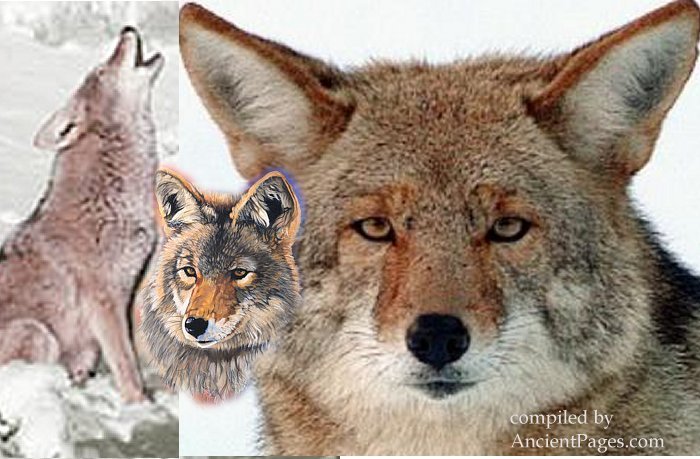Coyote: Hero, Trickster, Immortal And Respected Animal In Native American Myths
A. Sutherland - AncientPages.com - The Coyote is a very prominent animal in many Native American legends.
This animal plays an essential role in the mythology of tribes all over North America.
"Native Americans respected the animal for its cunning and its ability to survive in forest, mountain, prairie, and desert country. In some Indian stories, the mythical cultural hero Coyote helps people. But usually, he is a trickster who plays practical jokes on people or a meddler who ruins people's plans. He is often regarded as greedy. Whether good or bad, however, Coyote is always clever. Coyote was one of the Holy People in the Dineh religion." 1
The basis of his character is the same in all myths; however, certain character traits of this extraordinary figure vary widely from region to region. Like real coyotes, mythological ones are usually notable for their crafty intelligence, stealth, and voracious appetite.
However, American Indian coyote characters vary widely from tribe to tribe. In some Native American coyote myths, the animal is a revered cultural hero who creates, teaches, and helps humans; in others, he is a sort of antihero who demonstrates the dangers of negative behaviors like greed, recklessness, and arrogance; in still others, he is a comic trickster character, whose lack of wisdom gets him into trouble while his cleverness gets him back out. In some Native coyote stories, he combines all three at once.
In some Native American myths, Coyote is a respected and admired cultural hero helping people; in others, many see in him negative ("dark") personality traits like arrogance, greed, and recklessness. Still, others consider the animal a comic trickster character whose lack of wisdom gets him into trouble while his cleverness gets him back out.
In some Native coyote stories, he combines all three at once.
In myths of the Kalapuya tribe of Native Americans, with their traditional homeland in the Willamette Valley in Oregon, the Coyote remains the most common trickster figure.
The Kalapuya stories about this Old Man Coyote range from funny tales of mischief and clowning to legends with much more profound meaning and are devoted to the nature of the world.
Also among the Modocs, a Native American people who originally lived in the area that is now northeastern California and central Southern Oregon, the Chief Coyote is a trickster that possesses the indestructible disk of the sun, through which he is immortal, or, at least, is renewed every day to carry that luminary. Because of his vanity and boastfulness, the Coyote undertakes various ambitious enterprises, in which he fails due to his passions.
The Shasta Indians have a long tale of a coyote whose fond grandmother tried to make him a great sorcerer, but he had to avoid several temptations on his way to the sacred mountain. Unfortunately, he failed to succeed due to his nature.
In many Native American cultures, the Coyote is credited with bringing humanity the gift of fire, the destruction of monsters, the making of waterfalls, and the teaching of valuable arts to the Indians. But perhaps the most famous and fascinating incarnation of this remarkable creature is presented in the Nez Perce tribe's myth of Coyote and the Shadow People. His actions lead to humankind being forever separated from the spirit realm of the dead.
In the cyberspace of Coyote Kiva, the creature is restored to his ancient place among the stars. His image, with the Maasaw or a shaman, is traced on the kiva wall. He is honored for his magic, not feared, respected for his wisdom, not ridiculed. He is a symbol of expectation, endurance, renewal, and healing of Earth. He is a symbol of music, dance, and joy.
In myths of the Southwest Native Americans, the Coyote - is described as having human form and, occasionally, animal form, sometimes helping people. Still, most often, his impulsive and foolish behavior causes nothing but trouble for everyone around him. Frequently, he is killed through his recklessness, but miraculously always comes back to life afterward.
Among the Pueblo tribes, the Coyote was believed to have hunting medicine.
To the Zuni Indians, they are masters of the medicine powers of that particular region.
Zuni Indian hunters kept the coyotes' stone effigies as one of their six hunting fetishes of the six directions. The six directions are each represented by a fetish of a different color and are as follows:
North --------- Mountain Lion (yellow)
West ---------- Coyote (blue)
South --------- Badger (red)
East ---------- Wolf (white)
Upper Region -- Eagle (multiple colors)
Lower Region -- Mole (black)
Coyotes are also used as clan animals in some Native American cultures.
Tribes with Coyote Clans include the Cahuilla tribe, the Mohave, the Hopi (whose Coyote Clan is called Isngyam or Ish-wungwa), the Zuni (whose Coyote Clan name is Suski-kwe,) and other Pueblo tribes of New Mexico. Some tribes, such as the Pomo, also had a Coyote Dance among their traditional dances.
Written by – A. Sutherland AncientPages.com Staff Writer
Copyright © AncientPages.com All rights reserved. This material may not be published, broadcast, rewritten or redistributed in whole or part without the express written permission of AncientPages.com
Expand for referencesReferences:
- Waldman, Carl. Encyclopedia of Native American Tribes
Hartley B. Alexander, Native American Mythology
More From Ancient Pages
-
 2.37-Meter Sword And Unusual Shield Mirror Unearthed In Ancient Mound In Japan
Archaeology | Jan 27, 2023
2.37-Meter Sword And Unusual Shield Mirror Unearthed In Ancient Mound In Japan
Archaeology | Jan 27, 2023 -
 7,000-Year-Old Unique Artifacts Discovered Under Melting Ice In Canada
Archaeology | Nov 30, 2023
7,000-Year-Old Unique Artifacts Discovered Under Melting Ice In Canada
Archaeology | Nov 30, 2023 -
 Kuthodaw Pagoda – ‘The World’s Largest Book’ Carved In 729 Marble Slabs
Featured Stories | Feb 24, 2018
Kuthodaw Pagoda – ‘The World’s Largest Book’ Carved In 729 Marble Slabs
Featured Stories | Feb 24, 2018 -
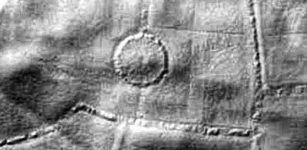 LIDAR Technology Reveals Lost Bronze Age Forts In Devon
Archaeology | May 4, 2020
LIDAR Technology Reveals Lost Bronze Age Forts In Devon
Archaeology | May 4, 2020 -
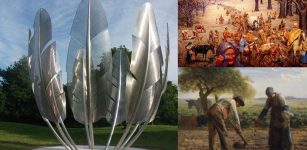 Kindred Spirits: Why Did The Irish Build A Monument In Honor Of Native Americans?
Ancient History Facts | Oct 22, 2016
Kindred Spirits: Why Did The Irish Build A Monument In Honor Of Native Americans?
Ancient History Facts | Oct 22, 2016 -
 Ancient Scar Dragon Plaque And The Viking Boat To The Otherworld
Artifacts | Feb 4, 2016
Ancient Scar Dragon Plaque And The Viking Boat To The Otherworld
Artifacts | Feb 4, 2016 -
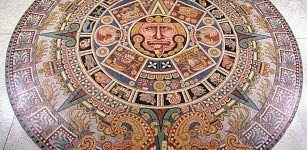 Aztecs’ Five Suns Creation Myth And Prophecy
Aztec Mythology | Jul 18, 2018
Aztecs’ Five Suns Creation Myth And Prophecy
Aztec Mythology | Jul 18, 2018 -
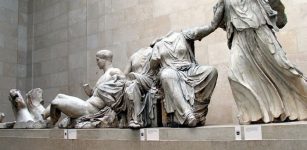 Parthenon Marbles: MEPs Call On Boris Johnson To Return Treasures To Greece
Artifacts | Nov 19, 2020
Parthenon Marbles: MEPs Call On Boris Johnson To Return Treasures To Greece
Artifacts | Nov 19, 2020 -
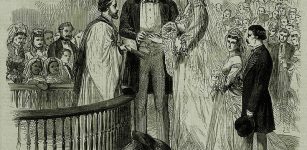 On This Day In History: One Of The Tallest Women In History – Died – On August 5, 1888
News | Aug 5, 2016
On This Day In History: One Of The Tallest Women In History – Died – On August 5, 1888
News | Aug 5, 2016 -
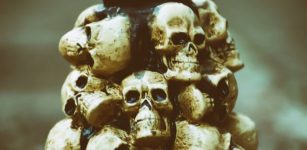 Day Of The Dead: From Aztec Goddess Worship To Modern Mexican Celebration
Ancient Traditions And Customs | Oct 30, 2019
Day Of The Dead: From Aztec Goddess Worship To Modern Mexican Celebration
Ancient Traditions And Customs | Oct 30, 2019 -
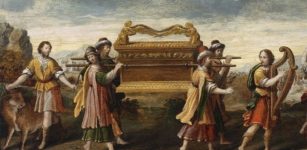 Archaeologists Will Soon Excavate Biblical Site Where Ark Of The Covenant Once Stood
Archaeology | Feb 23, 2017
Archaeologists Will Soon Excavate Biblical Site Where Ark Of The Covenant Once Stood
Archaeology | Feb 23, 2017 -
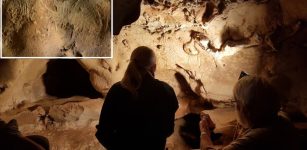 Neanderthal Cave Engravings Identified As Oldest Known, More Than 57,000 Years Old
Archaeology | Jun 22, 2023
Neanderthal Cave Engravings Identified As Oldest Known, More Than 57,000 Years Old
Archaeology | Jun 22, 2023 -
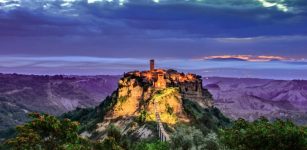 Civita di Bagnoregio – Magnificent 2,500-Year-Old Etruscan City In The Sky Is Struggling To Survive
Featured Stories | Jun 23, 2021
Civita di Bagnoregio – Magnificent 2,500-Year-Old Etruscan City In The Sky Is Struggling To Survive
Featured Stories | Jun 23, 2021 -
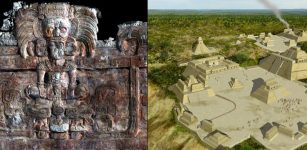 Spectacular Discovery Of Ancient Tombs Beneath Maya Pyramids Can Unravel The Mystery Of The Snake Kings
Archaeology | Oct 17, 2016
Spectacular Discovery Of Ancient Tombs Beneath Maya Pyramids Can Unravel The Mystery Of The Snake Kings
Archaeology | Oct 17, 2016 -
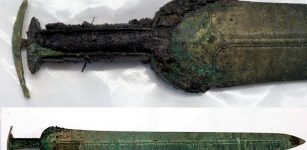 A 1.3 kg Heavy Bronze Sword Unearthed On Funen Island, Denmark
Archaeology | Mar 16, 2021
A 1.3 kg Heavy Bronze Sword Unearthed On Funen Island, Denmark
Archaeology | Mar 16, 2021 -
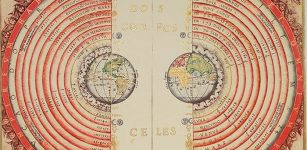 How Did Ancient Civilizations Make Sense Of The Cosmos And What Did They Get Right?
Civilizations | Mar 7, 2022
How Did Ancient Civilizations Make Sense Of The Cosmos And What Did They Get Right?
Civilizations | Mar 7, 2022 -
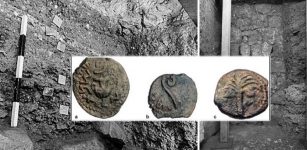 New Discovery: 2,000-Year-Old Monumental Street In Jerusalem Built By Pontius Pilate
Archaeology | Oct 21, 2019
New Discovery: 2,000-Year-Old Monumental Street In Jerusalem Built By Pontius Pilate
Archaeology | Oct 21, 2019 -
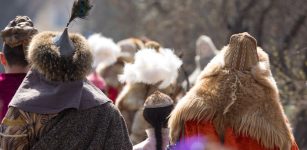 Something Unexpected Stopped Mongol Hordes From Conquering Europe
Featured Stories | Jul 11, 2017
Something Unexpected Stopped Mongol Hordes From Conquering Europe
Featured Stories | Jul 11, 2017 -
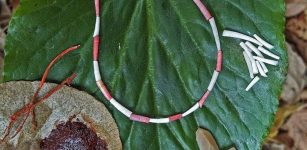 15,000-Year-Old Shell Beads Found Kebara Cave Are The Oldest Known Use Of Organic Red Pigments
Archaeology | Oct 27, 2023
15,000-Year-Old Shell Beads Found Kebara Cave Are The Oldest Known Use Of Organic Red Pigments
Archaeology | Oct 27, 2023 -
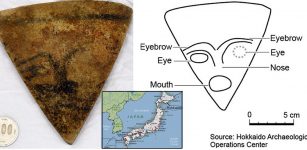 Jomon Period: Triangle-Shaped Stone Artifact Depicting Human Face Found For The First Time In Japan
Archaeology | Dec 25, 2017
Jomon Period: Triangle-Shaped Stone Artifact Depicting Human Face Found For The First Time In Japan
Archaeology | Dec 25, 2017

